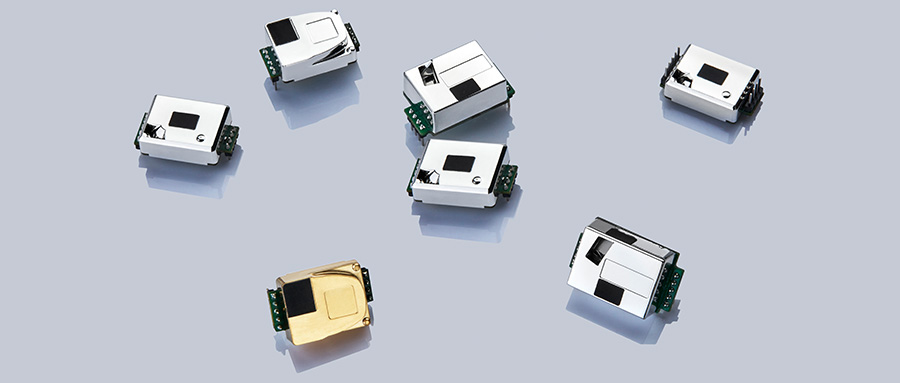

In 1756, Scottish chemist Joseph Blake was the first to quantitatively study the carbon dioxide gas he called "fixed air." Since then, scientists have been looking for ways to measure this gas.
One of the earliest carbon dioxide measuring devices was the mercury manometer. A manometer uses a U-shaped glass tube filled with mercury to measure gas pressure. If the temperature, pressure, and volume of a gas sample containing CO₂ molecules are known, the number of moles of CO₂ can be calculated using the ideal gas law PV=nRT.
Although mercury manometers can measure gases very accurately, the measurement process can take several hours. Then, people invented infrared (IR) gas analyzer for calibration. It was accurate and efficient, but it was bulky. The sample tube alone was 40 cm long. On the one hand, a longer optical path is needed to more accurately measure lower levels of CO₂, which means a larger gas sampling chamber; on the other hand, in environments such as schools, offices, homes, and cars, smaller gas sampling chambers are needed. The sensors are installed in compact equipment for detection.
As a result, small CO₂ sensors came into being.
MFrontier carbon dioxide sensor adopts the NDIR non-dispersive infrared technology principle, which uses the phenomenon that CO2 molecules can absorb infrared rays with a specific wavelength of about 4.2 µm to detect gases and accurately calculate the concentration of CO2 gas.
Features
No oxygen dependenc
Strong adaptability to complex environment
Strong anti-interference ability
High sensitivity, high resolution, low power consumptio
Built-in temperature compensation, high detection accuracy
Multiple ranges optional, full range linearization, digital outpu
Good stability and long service life
Parameters
Model | MTP60-F single channel NDIR gas sensor | MTP80-A dual channel NDIR gas sensor |
|---|---|---|
Detect ga | carbon dioxide | |
Measuring principl | NDIR | |
Measuring concentration range | 400~5000ppm | |
Measurement interval | 2s | |
Measurement accurac | ± (50ppm + 5% of reading) | |
Response tim | T90 time is 90s | |
Supply voltag | 4.2V~5.5V | |
Supply current | 300mA peak current 4mA normal operating current 13mA average operating current | |
Output signal | Uart /IIC | |
Environmental conditions | 0~50°C;0~90% RH(non-condensation) | |
Life span | ≥10years | |
Tips
Carbon dioxide, methane, nitrous oxide, etc. are all greenhouse gases, but carbon dioxide plays the greatest role in climate change.
In the 21st century, human life patterns have changed. In order to isolate themselves from noise and enjoy the comfort and convenience brought by air conditioning systems in living spaces, offices, cars, etc., people keep their windows closed for a long time, so that the indoor carbon dioxide concentration is much higher than the average outdoor level. Indeed, there are medical reports that sleeping in an air-conditioned room for eight consecutive hours will cause symptoms of Sick Building Syndrome such as nasal congestion and red and itchy skin in the morning due to adequate air convection, which helps dust mites breed.
When the concentration of CO₂ reaches 1%, people will feel shortness of breath, dizziness, and heart palpitations. When it reaches 4% to 5%, people will feel asthma, headache, and dizziness. When it reaches 10%, it will cause serious confusion of human body functions, causing People lose consciousness, become confused, stop breathing and die.
The harm of carbon dioxide to the human body cannot be ignored. The use of sensors can help humans accurately measure the CO₂ concentration in the space where they live, provide early warning, and protect the safety of people's lives and property.
Share